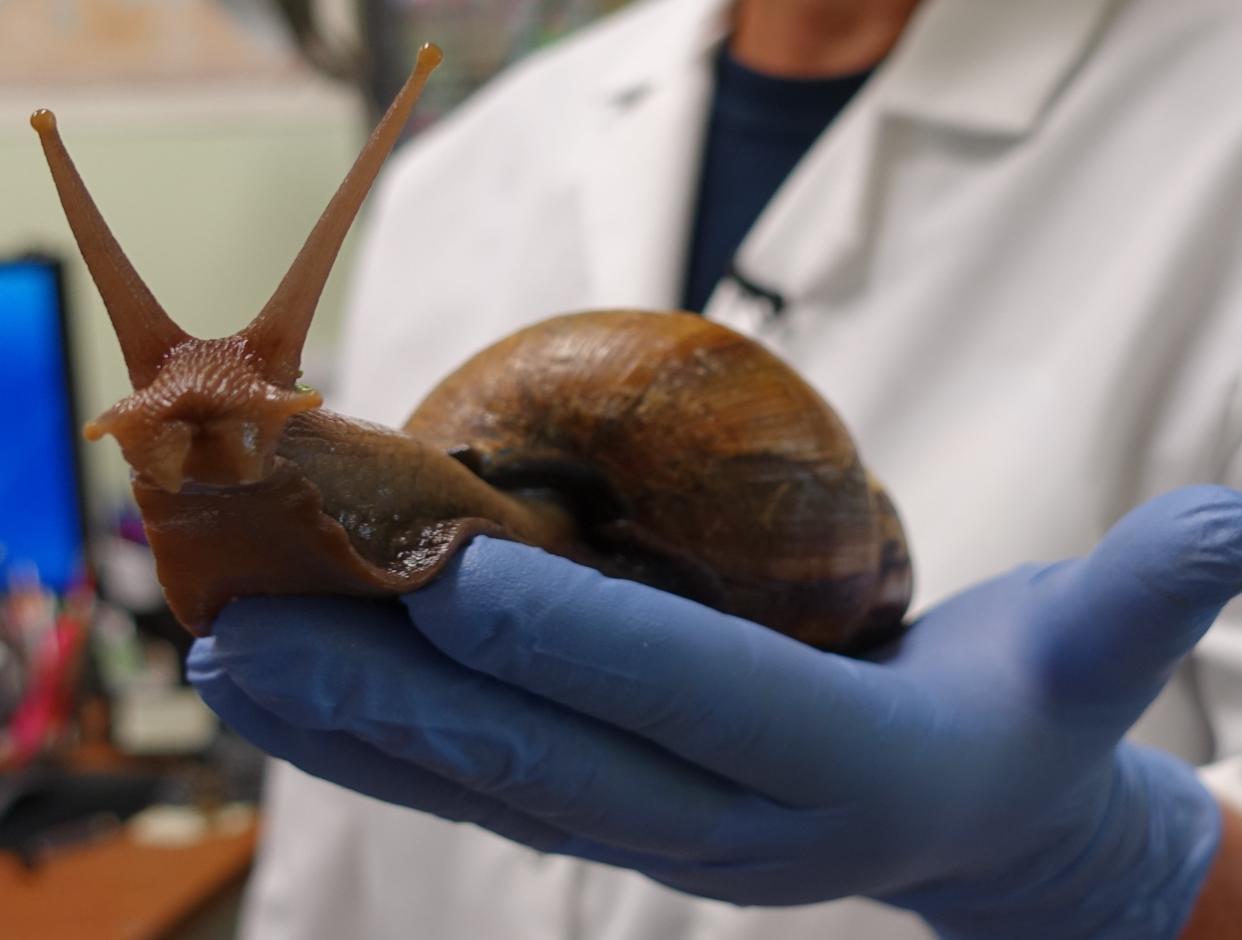Another giant African snail sighting forces Florida county into quarantine
The reappearance of an invasive snail species forced state officials to enact a quarantine order two weeks ago for residents of Florida's Pasco County, an area north of Tampa along the gulf coast. As of Thursday, more than 1,000 snails had been captured, said agriculture commissioner Nikki Fried, with the vast majority of them found alive.
Authorities took action last month after confirming that a notoriously destructive breed of mollusk, known as the giant African land snail, was identified by a community gardener in the city of Port Richey. A division of Florida's department of agriculture that manages pest control began to survey the region for additional snail sightings once the quarantine mandate was in place, according to the agency. The control unit started to treat the land with baited pesticide at the end of June.
The snails captured so far were removed from 29 different properties primarily located in one section of New Port Richey, Fried told reporters at a Thursday press conference. Residents are encouraged to report any future sightings to a helpline at the agriculture department as officials continue to search for them.
Fully eradicating a population of giant African land snails can take years.
Florida's agriculture department has called the giant African snail "one of the most damaging" mollusk subtypes in the world. Its unusually large size and ability to procreate in vast quantities allows the creature to infiltrate surrounding areas quickly, posing threats to vegetation and infrastructure because of its appetite for at least 500 different plants as well as paint and stucco. At four months old, a single snail can lay thousands of eggs at a time and each can grow to be 8 inches long as an adult.

The snails are mobile — experts warn that they "cling to vehicles and machinery," plus trash, to "move long distances" — and resilient, with the capacity to survive for a year while "inactive" and buried in soil to shield itself from unfavorable weather. They also present serious health risks to humans, as the snails carry a parasite called rat lungworm that can cause meningitis. People are advised to wear protective gear, like gloves, when handling them.
Giant African land snails have wreaked havoc on parts of Florida before. Although they are not native inhabitants of the state, officials have traced infestations dating back to the 1960s to escaped house pets and illegal importations by religious groups, the Tampa Bay Times reported. Owning and importing giant African land snails without a permit is against the law in the U.S. Any attempt to move the snails after a sighting is also illegal without proper documentation.
Florida's agriculture department has recorded two instances where the snail was fully eradicated. The most recent was just last year, a decade after one of the giant snails was initially spotted in Miami-Dade County. Officials say a live snail was last found in that area in 2017, prior to the most recent sighting last week.
Detailed information about giant African land snails and Florida's response to the latest sighting is available on the department's website.
Former White House counsel Pat Cipollone to testify before January 6 committee
13 killed and dozens injured in Chicago over July 4 weekend
U.K. Conservative Party to elect new prime minister after Boris Johnson's decision to resign
